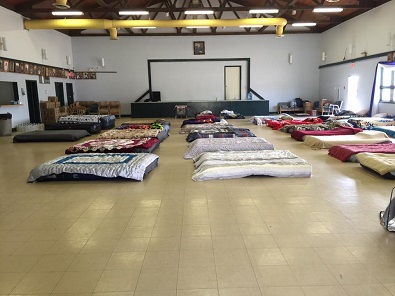One of the set-ups at Beaver Lake Cree Nation in Alberta. Photo courtesy Facebook, Missy Jacknife.
As vehicles head from north of Fort McMurray in convoys, evacuation centres on Alberta First Nations are bracing to take in anyone who needs a place to stay.
Beaver Lake Cree Nation is 10 kilometres south of Lac La Biche, which has a major evacuation centre set up.
Beaver Lake’s Dylan Landstrom says only a few days ago, he was dubbed the lead of the Cree Nation’s emergency management efforts.
He says the area’s fire chief is asking how many people they can accommodate.
They have 40 beds set up in an old hall with 20 more air mattresses that haven’t been set up yet. The school is another centre that can provide shelter for evacuees.
Last year, First Nations housing La Ronge fire evacuees ran into issues with not being Red Cross-accredited. That meant they had no promise of being reimbursed for providing shelter.
But this time around, Landstrom says the province of Alberta’s emergency management has been in contact with them. They’re being asked to register evacuees to be reimbursed later, possibly through Indigenous and Northern Affairs Canada.
Other First Nations – both north and south of Fort McMurray – were able to offer immediately after evacuations, but that has been short-lived.
After the initial rush from the city, further evacuations were announced for the Fort McMurray First Nation. Thousands of those who are part of the southbound convoy today, had been staying at camps on the First Nation.
At first, the reserve had opened three different work camps, a school and other public buildings for evacuees.
Other camps – like the Chipewyan Prairie First Nation’s 700-bed camp, called Moose Have Lodge – have also been uprooted.
The immediate fire threat is different for each area.
